Menus
- Box of two
- Two-cylinder also in the 125cc
- Strong, easy to turn, light – and fast
- Stability left nothing to be desired
- Scrambler model as an alternative
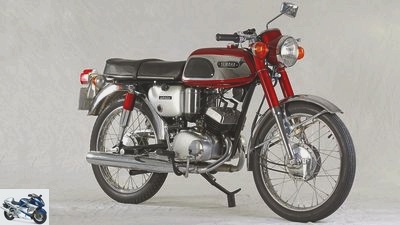
bilski-fotografie.de

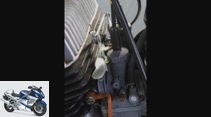

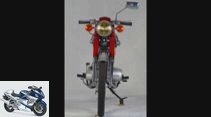
12th photos
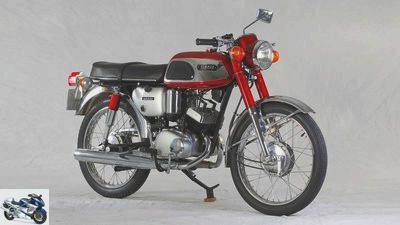
bilski-fotografie.de
1/12
Yamaha YAS-1 in the studio.
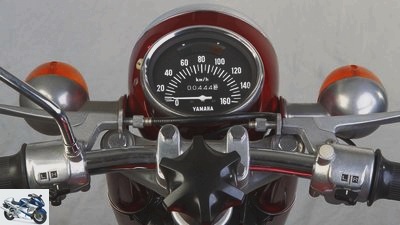
bilski-fotografie.de
2/12
Spartan, but tidy: there is little to see in the cockpit and little for the driver’s thumb to do.
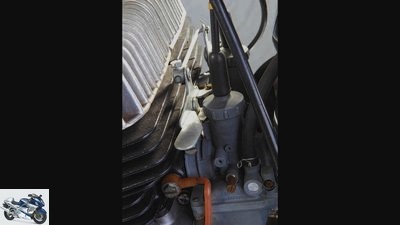
bilski-fotografie.de
3/12
The choke valve activates the mixture enrichment via the linkage on the two 17-millimeter Mikuni carburettors.
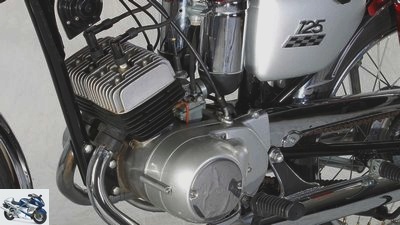
bilski-fotografie.de
4/12
The tidy 125cc two-cylinder looks more adult than it is – also because of the eye-catching chrome-plated cans that house the air filters.
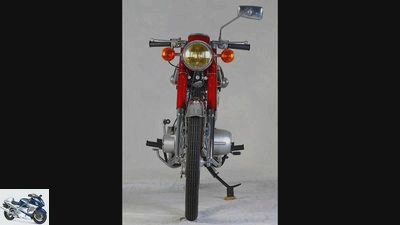
bilski-fotografie.de
5/12
Yamaha YAS-1 in the studio.
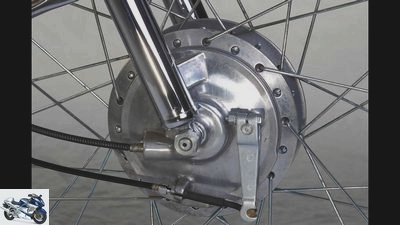
bilski-fotografie.de
6/12
The small simplex drum brake at the front was only replaced by a more effective duplex system on the successors.
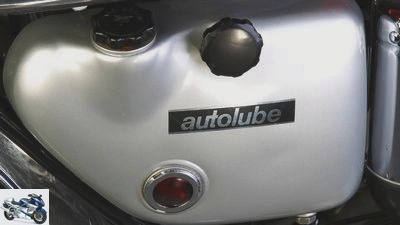
bilski-fotografie.de
7/12
Oil tank with sight glass in the hinged side cover for the Autolube separate lubrication.
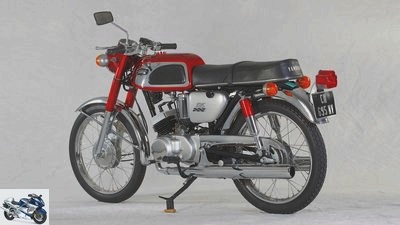
bilski-fotografie.de
8/12
Yamaha YAS-1 in the studio.
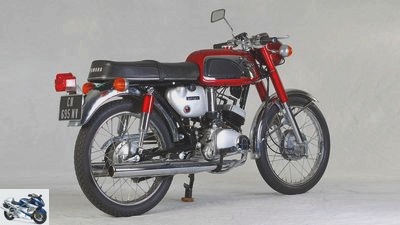
bilski-fotografie.de
9/12
Yamaha YAS-1 in the studio.
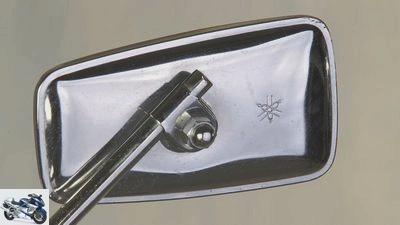
bilski-fotografie.de
10/12
Yamaha YAS-1 in the studio.
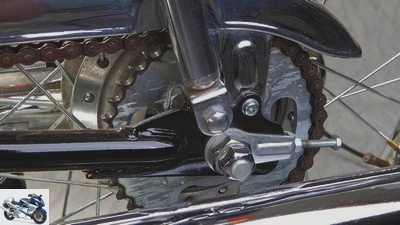
bilski-fotografie.de
11/12
Yamaha YAS-1 in the studio.
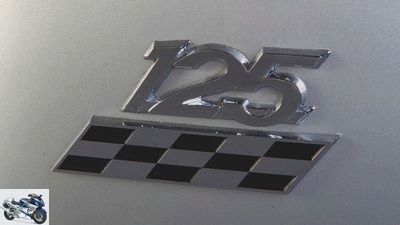
bilski-fotografie.de
12/12
Yamaha YAS-1 in the studio.
Yamaha YAS-1 in the studio
Box of two
Content of
What brought the Yamaha works team the world championship title should also be available for purchase in civilian form for the customer as a street bike: For the 1968 model year, Yamaha offered a sporty two-stroke 125cc – with two cylinders. The Yamaha YAS-1 laid the foundation for a successful series.
The Yamaha YAS-1 saw the light of day in the world of two-wheelers in an era of change steeped in history, and it actually came at the right time. The citizens of the shattered post-war Germany had finally left behind the years in which two-wheelers were used as everyday and commercial vehicles because they couldn’t afford anything else. The car trend was still in its prime at the beginning of the 1960s, people drove VW Beetles or, if they could afford it, Opel, Ford or even Mercedes. The two-wheeler market had collapsed, but it was already starting to counterstrike. The trick: away from the utility vehicle towards the fun, yes to the luxury vehicle. You bought the bike in addition to the car and indulged in two-wheeling just for fun.
Buy complete article

Yamaha YAS-1 in the studio
Box of two
The beginning was tough
The rise of Japanese motorcycle manufacturers, whose products increasingly spilled over to America and Europe, fit into this period. And which, as in the case of Yamaha, led to the installation of an official importer after the first machines imported from free dealers. At the IFMA in Cologne in 1964, the Mitsui trading company presented motorcycles from the Yamaha brand for the first time. The beginning was tough, but the involvement of the Japanese (including Honda) in racing helped to improve the image of the two-wheeler and make the series products known. Yamaha was best known for its two-stroke engines. World-class drivers like Phil Read won the first world championship titles, including in the 125cc class: Bill Ivy won the eight-liter class as early as 1967, followed by Phil Read in 1968. The sporty image rubbed off on the street motorcycles on offer, but the technology also benefited from the developments of the racers. In 1967, for example, Yamaha also introduced what was common in the larger displacement categories in the small eight-liter class: with the Yamaha YAS-1, a two-cylinder two-stroke engine saw the light of day, while the German competition from Zundapp, Maico and Hercules still relied on the single-cylinder Two-stroke engine continued.
Two-cylinder also in the 125cc
The experience gained from racing was also incorporated into the production models – the first models delivered in 1967 still had the three-channel system, but the 1968 version of the Yamaha YAS-1 already offered the newly developed five-channel system. The basic design of the slot-controlled two-cylinder is based on the (still long-stroke) AT 90, which was presented in Japan in 1964 – but the 125 version is now square with values of 43 millimeters for bore and stroke. Otherwise, little has changed in the basic construction of the engine with the vertically divisible engine housing and the four-bearing crankshaft. However, progress can again be seen in the power transmission with the new five-speed transmission.
Strong, easy to turn, light – and fast
With its 15 hp at 8,500 rpm, the Yamaha YAS-1 already reached a top speed of 125 km / h and, thanks to its low weight of just 110 kilograms (fully fueled), enabled considerable acceleration values. Above all, the engine impressed with its high revving speed, the performance of which does not collapse at rated speed, but rather continues to revolve up to 10,000 rpm, but also with its turbine-like, almost vibration-free run. Not least thanks to the separate and lavishly ribbed cylinders, the two-cylinder is considered to be thermally healthy, and the piston speed of only 12.2 m / sec at a nominal speed of 8,500 / min is clearly in the uncritically low range. Of course, the YAS-1 engine also has Yamaha’s own separate lubrication system, the so-called Autolube system. Dosed via the throttle grip, the delivery rate of the oil pump is regulated by cable and distributor, the 1.6 liter oil tank is located in the right, hinged side cover. The high quality of workmanship and the clean finish were also valued and once praised in the test.
Stability left nothing to be desired
Criticism of the Yamaha YAS-1 was at best loud with regard to the too small fuel tank (9.5 liters), the plentifully hard rear suspension and the too big jump between fourth and fifth gear, already known from other Yamaha models. When it came to the chassis, Yamaha basically grabbed the shelf and relied on a single-tube frame with an open beam that integrates the engine as a load-bearing part. The stability left nothing to be desired, especially the handiness of the 125 in view of the short wheelbase of only 1,200 millimeters and the narrow 18-inch wheels. The rather spartan simplex drum brake was only replaced by a duplex system in the successor model AS-2 presented at the end of 1969 (from then on the Y in the type designation was omitted). A new tank design, a new fork and new instruments, now with a tachometer, were also among the innovations.
Scrambler model as an alternative
By the way, Yamaha already offered a tuning kit for the YAS-1, with which the racing enthusiasts could convert their machine into a suitable racer with a six-speed gearbox in order to take part in the club races popular at the time. The kit consisted of cylinders, pistons, cylinder heads, exhaust, ignition and carburetors and is said to have helped the twin to 22 hp. In addition, the street version Yamaha YAS-1 was accompanied by a scrambler model with a wider handlebar with cross brace and raised exhaust pipes and heat protection, the YAS-1C. At first, the “real” motorcyclists didn’t really take the small 125cc racer for granted, saw it as more of an inflated moped than a real motorcycle. Mitsui was only able to bring around 200 copies of the YAS-1 to the people in Germany. The situation was different in neighboring France: in the first year 1968 around 400 units were sold there, and in the following year even more than 1,000 units. So if you are looking for one of the rare treasures today, you should brush up your French language skills. At the original price of 1,849 marks at the time, which is the equivalent of just under 950 euros, you should look in vain today for a well-preserved example such as our photo bike provided by Yamaha Motor France.
Related articles
-
Bilski 22 pictures Bilski 1/22 Yamaha YDS-3. Bilski 2/22 Yamaha YDS-3. Bilski 3/22 Yamaha YDS-3. Bilski 4/22 Yamaha YDS-3. Bilski 5/22 Yamaha YDS-3. Bilski …
-
Yamaha XT 500 S: Enduro classics from Yamaha in the studio
Sdun 9 photos Sdun 1/9 Yamaha XT 500 S.. Sdun 2/9 The speedometer shows just under 500 meters. And every single one of them is pushed honestly! Sdun 3/9…
-
Laverda 500 Alpino and Yamaha XS 500
bilski-fotografie.de 22nd photos bilski-fotografie.de 1/22 Laverda 500 Alpino I Yamaha XS 500 on the move. bilski-fotografie.de 2/22 Sporty Italian…
-
Kawasaki KH 400, Yamaha DT 400, Yamaha RD 400
bilski-fotografie.de 27 photos bilski-fotografie.de 1/27 In the well-stocked, clear RD cockpit, there are all the necessary warning lamps, including an…
-
Driving report Yamaha factory crosser YZM 400 F
Driving report Yamaha factory crosser YZM 400 F It’s a pony While the competition in the Cyclo-cross World Championship galloped powerful battle horses,…
-
On the move: the Honda VF 500 F II and Yamaha RD 500 LC
fact On the move: Honda VF 500 F II and Yamaha RD 500 LC Extreme athlete Content of At the beginning of 1984, the Honda VF 500 F II and Yamaha RD 500 LC…
-
Driving report Yamaha YZ 400 F
Driving report Yamaha YZ 400 F Menopause Times are changing: Small four-stroke crossers will come and really heat up the sedate steam hammers like the…
-
Jahn Cult bike Yamaha RD 350 LC Yamaha RD 350 LC The two-stroke theme was through forever. Exhaust gas, noise, yes, yes, it’s okay, must be. Then at the…
-
Small Yamaha XSR 700 Bantam Racer in the driving report
fact 8th photos fact 1/8 Classic shapes in connection with sporty talent provide the basis for a gorgeous conversion. fact 2/8 No rocking, no swaying or…
-
www.bilski-fotografie.de 11 photos www.bilski-fotografie.de 1/11 The two-stroke still cuts a fine figure today. www.bilski-fotografie.de 2/11 With a…